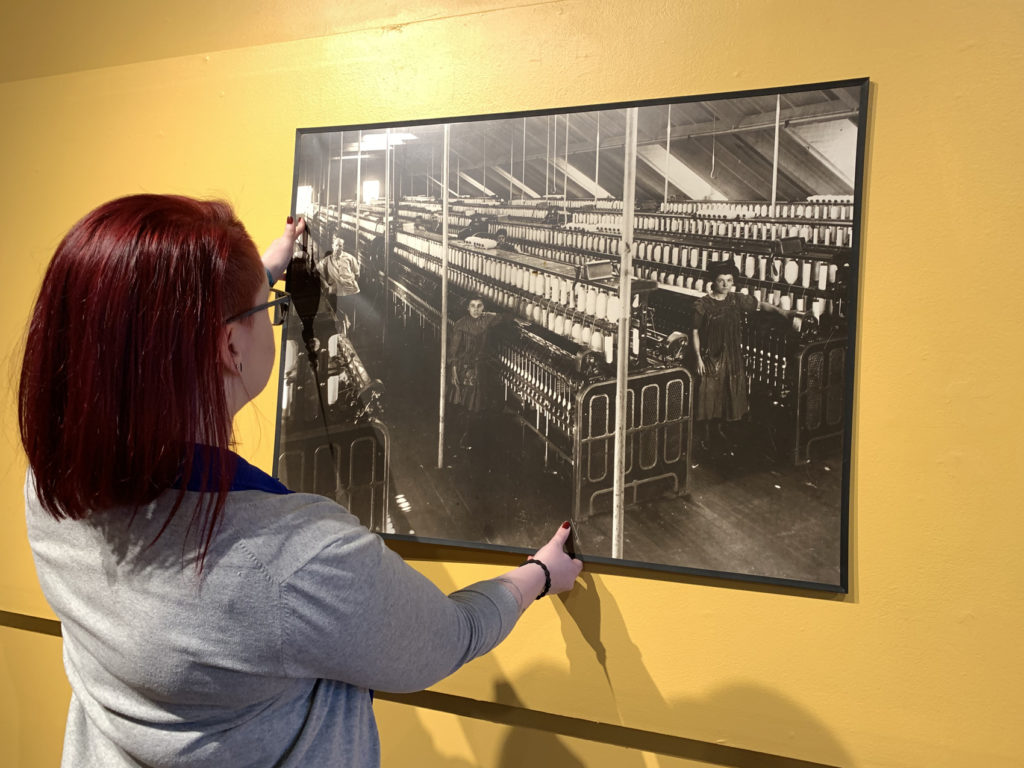Museum L-A’s newest exhibit: “All work and No Play”

Opening January 30, Museum L-A’s newest gallery exhibit,
“All Work and No Play”, delves into a grim part of America’s
industrial labor history. The exhibit explores the historic use of
children as laborers in industries such as textile mills, sardine
canneries, and family farms throughout the state of Maine, in an
effort to understand how child labor became a widespread issue in the
United States. By using information about the working conditions of
these young workers and the decades of labor reform, the museum will
present a well-rounded understanding of the subject rather than place
blame on the industries described.
Child labor has been a consistent topic for educational tours at the
museum since its opening. Many teachers, especially those with younger
students, request that their tours provide information about
children’s roles in textile mill operations as a way to open the eyes
of newer generations and highlight how different their way of life is
compared to that of their ancestors. The museum has created numerous
lesson plans and educational materials relating to this topic, but
this is the first time a full-scale exhibition will be installed in
the gallery to showcase the experiences of this underrepresented
sector of the workforce.
“With the negative connotation of the use of child labor in textile
mills in other parts of the country and the world, visitors to the
museum often ask about whether or not children worked at the Bates
Mill,” Emma Sieh, Museum L-A’s collections and exhibits coordinator
explains. “We thought it was time to address this difficult topic and
help our visitors understand the reality of what it was like to be a
child laborer historically, in the hopes of starting new and important
discussions about its practice today.”
The new exhibition was curated not only to reflect on the use of child
labor in the Lewiston-Auburn area, but on its use in industries
throughout Maine. Photographs and collections from six historical
organizations with locations throughout the state will be featured as
a way to share each region’s labor history during Maine’s Bicentennial
year. The original Lewis Hine photographs taken at the turn of the
century to persuade the American public to abolish the practice of
child labor and historian Joe Manning’s genealogical research into the
identities of the children in those photographs as part of his ongoing
Lewis Hine Project will also be featured. “These photographs were
crucial to changing social attitude and enacting child labor laws in
our country,” notes Audrey Thomson, executive director of Museum L-A.
The public is invited to attend the free opening reception for the
exhibit from 6 to 8 p.m. Thursday, January 30. Visitors will be able to
explore the exhibit and enjoy light refreshments.
“All Work and No Play” will be on display in the Museum L-A gallery
through mid-June 2020. Prior to the closing of the exhibition, the
museum will host a capstone event as a place to discuss and understand
how the use of child labor historically can still affect popular
opinion about its worldwide use today.
Museum L-A is located in the Bates Mill Complex at 35 Canal Street in
Lewiston, Maine. Its hours of operation are Tuesday through Friday
from 10 a.m. to 4 p.m. and Saturdays from 10 a.m. to 3 p.m. Special
tour requests and large group tours outside of these hours are
available by appointment. For more information, please contact info@museumla.org or call 207-333-3881.
Emma Sieh, collections and exhibits coordinator at
Museum L-A, installs one of the reproduction photographs of children
working in the textile mills in the gallery for the upcoming child
labor exhibit “All Work and No Play” that opens January 30. The
reproduction is on loan from the USM Franco American Collection.


